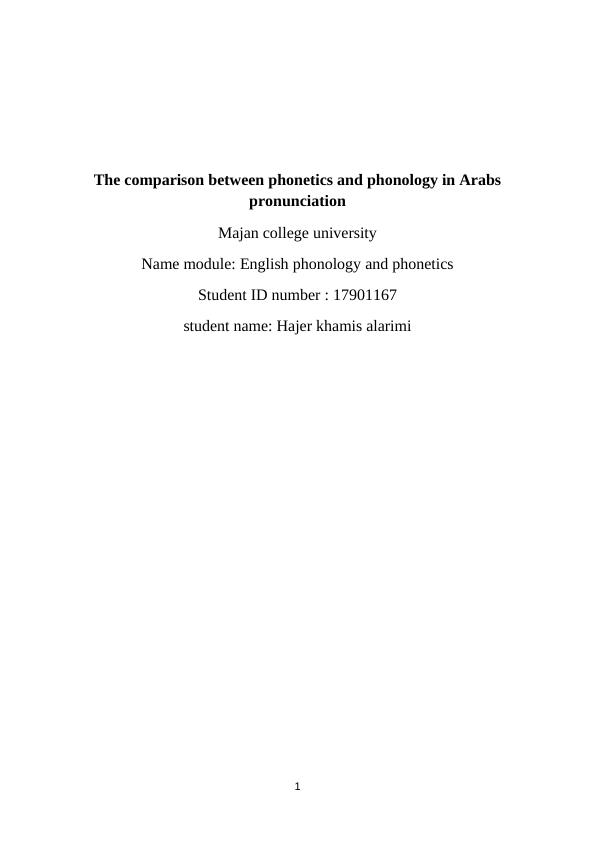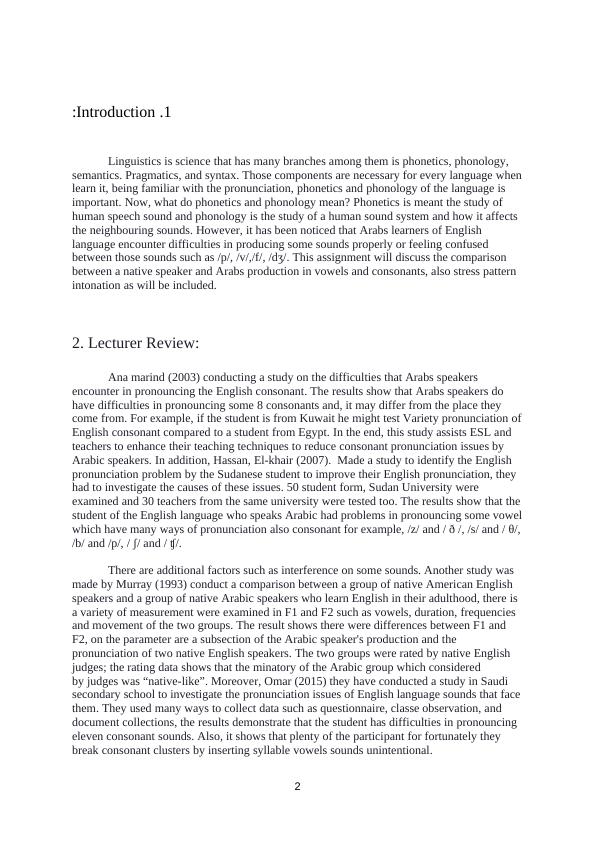Comparison between Phonetics and Phonology in Arabs
This assignment discusses the comparison between native speakers and Arabs in the production of vowels and consonants, as well as stress patterns and intonation.
9 Pages1407 Words63 Views
Added on 2023-01-03
About This Document
This assignment discusses the comparison between a native speaker and Arabs production in vowels and consonants, stress pattern, and intonation.
Comparison between Phonetics and Phonology in Arabs
This assignment discusses the comparison between native speakers and Arabs in the production of vowels and consonants, as well as stress patterns and intonation.
Added on 2023-01-03
ShareRelated Documents
End of preview
Want to access all the pages? Upload your documents or become a member.
Understanding if native English speakers can win over their Spanish pronunciation problems
|6
|1150
|357
Phonetics: Pronunciation and Mispronunciation of Consonants
|6
|764
|71
Phonology of Arabic Language: Inventory, Processes and Theories
|12
|4026
|224
Phonology of Arabic Language: Inventory, Processes and Theories
|12
|4027
|182
Phonetic and Phonology: Arab EFL learners pronunciation
|9
|736
|159
Sociology Spanish and English Phonetics Case Study 2022
|7
|1097
|12



